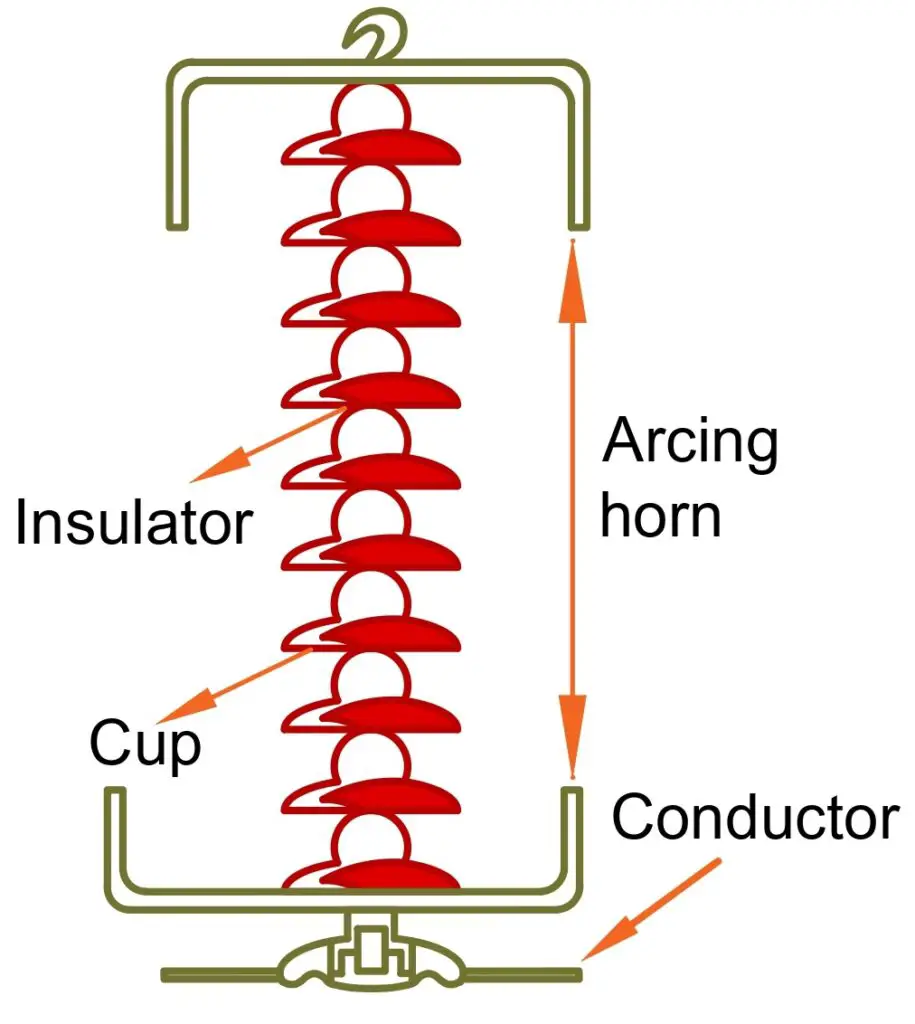The suspension insulator consists of several porcelain insulator units connected by metal links to form a flexible string. The conductor is typically attached to the lower end of the string.
The primary function of a suspension insulator is to separate and support line conductors electrically.
The diagram of the suspension insulator is shown in the image below.

A set of suspension insulators is created by stringing disc insulators on a metallic string in series.
Each disc in a suspension insulator is designed to withstand low voltage. For instance, a single disc can handle up to 11 kV. The discs are connected in series, and the number of discs needed for the insulator would depend on the desired voltage.
Cross-arms secure and stabilize poles where the conductor hangs from the insulator’s bottom section.
Advantages of Suspension Type Insulator
The following are the advantages.
- They are suitable for high-voltage transmission lines rated over 33kV, unlike the pin insulator, which has a maximum capacity of 33kV.
- The insulator is highly versatile and can be used in various situations. Although primarily designed for high-voltage transmission lines, the suspension insulator can also be used on low-voltage conductors. Additionally, its insulating capacity can be increased in response to higher voltages. To ensure you have enough insulation, it is recommended that you purchase extra insulation discs.
- Suspension insulators, once installed, are not fixed in place. Instead, they are designed to swing and move to accommodate changing conditions. This flexibility minimizes the mechanical stress on the insulator, thereby increasing their service life.
- They are manufactured with durable materials that can last for extended periods. Replacing the insulation disc without interfering with the others is simple in the event of damage.
- These insulators are placed above the conductors and provide partial lightning protection.
Types of Suspension Insulators
These are of two types.
- Cap and Pin Type
- Hewlett or Interlink Type
1. Cap-and-pin type Suspension Insulator
The cap and pin-type insulator have a forged steel cap and galvanized steel pin connected to a porcelain material. These units can be connected through either socket and ball or pin-clevis connections.
2. Interlink Type Insulator
The insulator is also referred to as a Hewlett-type insulator. It consists of two curved channels perpendicular to each other, with a U-shaped steel link passing through these channels to connect the unit.
The interlink-type insulators are stronger than cad-and-pin units. The metallic link supports the line even if the porcelain breaks, preventing power supply interruptions.
The Hewlett insulator’s porcelain links are weak due to high electrical stress, resulting in lower puncture stress than other types.
Conclusion:
Suspension insulators are crucial components of overhead power transmission. They provide strong support and dependable insulation for conductors. The Cap and Pin- type suspension Insulators are preferred due to their high mechanical strength and resistance to environmental factors.
